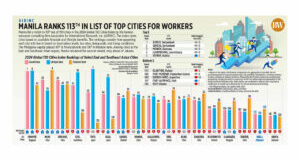“I remember ’29 very well … the drugged and happy faces of people who
built paper fortunes on stocks they couldn’t possibly have paid for. … In our
little town bank presidents and track workers rushed to pay phones to call
brokers. Everyone was a broker, more or less. At lunch hour, store clerks and
stenographers munched sandwiches while they watched stock boards and calculated
their pyramiding fortunes. Their eyes had the look you see around a roulette
wheel …but despondency, not prosperity was just around the corner.”—John
Steinbeck
This is what happened in the 1920s that led to the Great Depression and
Roosevelt’s New Deal.
Marriner Eccles, Rooselvelt’s New Deal Federal Reserve Chairman was one of
the first to characterize the cause of the Great Depression, when he said in
testimony before congress that it was the record income inequality of that time:
“The United States economy is like a poker game where the chips have
become concentrated in fewer and fewer hands, and where the other fellows can
stay in the game only by borrowing. When their credit runs out the game will
stop—Mariner Eccles, Federal Reserve Chairman during the Great
Depression.”
The current Gilded Age began in earnest with the election of President Ronald
Reagan and his credo that “government is the problem.” It has resulted in the
huge transfer of wealth from workers to the owners of capital—as much as
$1trillion, according to some economists—by cutting their taxes and deregulation
of whole industries.
Laws were also enacted to weaken labor unions and monoply laws were not
enforced so that corporations could transfer their factories overseas where
labor was cheaper, basically gutting America’s middle class industrial base that
has been the cause of so much anger and despair of America’s workers.
The U.S. is in 106th place of the 149 countries in income inequality as
ranked by the CIA’s
World Factbook; with a Gini inequality index of developing countries like
Peru and Cameroon. Whereas Finland and the Scandinavian countries are at the top
of equality rankings, Germany and France are 12th and 20th, respectively, as
I’ve highlighted in past columns. The higher the index, the greater the gap
between wealthy and poorer citizens of a country’s population.
It’s had to believe that we have reached that point once again, a time when
today’s wealthiest exceed the wealth of the Vanderbilt’s, Rockefeller’s and
Morgan’s tenfold that built those massive 5th Avenue mansions at the
turn of the 20th Century to show off their wealth, before there was
an income tax or Federal Reserve.
It was spawned by an economy fueled by oil, railroads, and a banking system
that enabled so many consumers to go into debt, until the stock market crashed
on Black Friday of 1929.
History is repeating itself with $Trillioners instead of the $Billionaires
(and $Millionaires) of that era because of Sillicon Valley and the Internet that
have made an Elon Musk, now the richest person in the world.
But it is at the cost of a greater concentration of wealth than ever. Today’s
moguls duplicate the 20th Century robber barons in wanting to share
as little of their wealth as possible—instead, they use their wealth to elect
conservative policies that lower tax rates and cut government benefits that
protect the other 99 percent of Americans.
Is President Biden’s Bidenomics’s spending of $trillions to modernize
America’s industrial base, infrastructure, and mitigate disasters caused by a
changing climate the last gasp of Roosevelt’s New Deal programs that protect
ordinary Americans?
The incoming Trump administration has tasked the richest man in the world to
set up a “Department of Government Efficiency”, they say, to downsize or
eliminate some of those programs to eliminate waste, but really to shrink or
eliminate the health and safety programs; such as the US Environmental
Protection Agency, Health and Education department, and even shrink the IRS once
again to enable the $Trillionaires to better evade taxes.
Trump is clear about his intentions. He intends to pick a cabinet based on
their loyalty to him as he did in his first term. Many have no qualifications;
most were lobbyists with blatant conflicts of interest which resulted in many
having to resign when their corruption was uncovered.
Such dysfunctional behavoir was a reason President Trump lost the House of
Represetatives to Nancy Pelosi and the Democrats in 2018, and Trump lost to
President Biden in 2020.
Sadly, the incoming all-Republican congress will probably give him the tax
cuts, inflationary tariffs and the mass deportation of undocumented immigrants
that will also be a repeat of Trump’s first term.
And many in the working class who voted for him will suffer again, and as
they have throughout Trump’s working life; thanks in large part to the Elon
Musk’s of the world that don’t believe in sharing their wealth.
Harlan Green © 2024
Follow Harlan Green on Twitter: https://twitter.com/HarlanGreen





